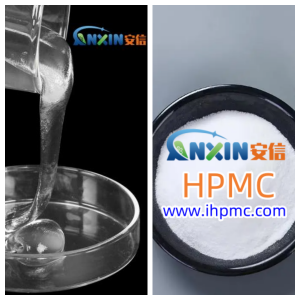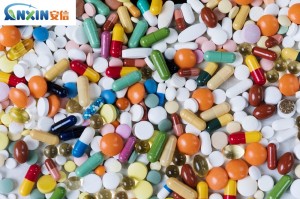Hydroxypropyl methylcellulose (HPMC), a nonionic cellulose ether, is widely used in the pharmaceutical industry due to its safety, nontoxicity, excellent stability, and versatility. It plays a key role in the development of tablets, capsules, and controlled-release formulations. As an important pharmaceutical excipient, pharmaceutical-grade HPMC not only improves formulation processes but also significantly enhances drug stability and medication compliance.
1. Role in Tablets
Tablets are the most widely used dosage form in clinical practice, and HPMC is primarily used in tablet preparation as a binder, film-forming agent, and disintegrant. First, HPMC exhibits excellent binding properties, effectively enhancing granule strength during wet granulation and dry compression, resulting in tablets with improved mechanical properties and preventing breakage or disintegration during transportation and storage. Second, HPMC forms a uniform protective film on the tablet surface, reducing moisture absorption, breakage, and damage. It also improves the tablet’s appearance and gloss, enhancing product market acceptance. Furthermore, HPMC’s solubility and hydrophilicity enable it to swell rapidly in gastrointestinal fluids, aiding tablet disintegration and promoting effective drug release, ensuring rapid drug efficacy.
2. Role in Capsules
HPMC is often used as the primary raw material for hollow capsule shells in capsule dosage forms. Traditional gelatin capsules suffer from hygroscopicity, brittleness, and limited availability. HPMC capsules, however, are increasingly favored by pharmaceutical companies due to their stable source, neutral properties, and compatibility with vegetarians. HPMC capsules have low hygroscopicity, maintaining excellent stability even in high-humidity environments, preventing drug degradation due to moisture absorption. Furthermore, the high transparency of the HPMC capsule shell facilitates display of the drug’s appearance and offers excellent temperature resistance, making it suitable for loading active ingredients that are sensitive to humidity and temperature. Furthermore, HPMC capsules disintegrate and dissolve rapidly in the body, ensuring timely drug release and thus enhancing bioavailability.
3. Role in Controlled-Release Formulations
The development of controlled-release formulations is a key area of modern pharmaceutical formulations, aiming to prolong drug efficacy, reduce dosing frequency, and improve patient compliance. HPMC plays a core role in dosage forms such as controlled-release tablets, sustained-release tablets, and osmotic pump tablets. Due to its excellent hydrophilicity and film-forming properties, HPMC rapidly absorbs water and swells in gastrointestinal fluids, forming a uniform gel barrier. The diffusion and dissolution rates of drugs through this gel layer are effectively controlled, achieving sustained release. By selecting HPMC with varying viscosities and degrees of substitution, drug release profiles can be flexibly tailored to meet the needs of diverse treatment regimens. Furthermore, HPMC is pH-independent, ensuring consistent drug release in both gastric and intestinal fluids, which is crucial for enhancing the consistency and reliability of controlled-release formulations.
4. Comprehensive Value and Development Trends
The advantages of pharmaceutical-grade HPMC extend beyond single dosage forms. It also addresses the growing trend toward diversified and personalized formulations. Its low toxicity and excellent biocompatibility meet the stringent requirements of pharmaceutical excipients. Furthermore, by manipulating the physicochemical parameters of HPMC, it can be used in tablets for both rapid and controlled release. With increasing patient demand for vegetarian, halal, and environmentally friendly options, market demand for HPMC capsules continues to grow. In the future, combined with emerging formulation technologies such as 3D printing and smart drug delivery, HPMC is expected to play a broader role, creating more room for innovation in drug development and clinical applications.
Pharmaceutical-grade HPMC plays a wide range of roles in tablets, capsules, and controlled-release formulations. It not only improves the mechanical properties and dissolution characteristics of tablets, but also provides enhanced stability and safety for capsule dosage forms, and ensures sustained and controllable drug efficacy in controlled-release formulations. With the continuous development of the pharmaceutical industry, HPMC is poised to become an irreplaceable and important material in the pharmaceutical excipient field.
Post time: Sep-30-2025

